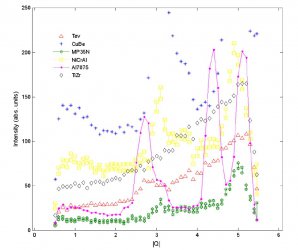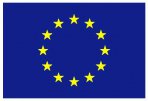UK: Material measurements

Background measurements for six materials measured at STFC.
When performing a neutron experiment, you ideally want your results data to reflect the properties of your sample only, and not the equipment surrounding it. That means that the contribution of the sample environment must be subtracted from the collected data, but first you have to evaluate their amplitude and know where they are.
Mark Kibble and his team, from STFC in the UK, have been performing transmission and background measurements on common and new materials that are being considered or used in some of the sample environment equipment for the Sample Environment work package, for example components of a novel neutron clamp cell.
Mark measured the neutron backgrounds of material discs and bars used or to be used for building pressure cells on various instruments at ISIS e.g. TOSCA, MERLIN and SQUID. They collected data on Hardened CuBe, MP35N, TiZr, NiCrAl, Ti-Al-V alloys of different grades and some Russian and Japanese NiCrAl alloys.
The result is a library of material data for people to compare when they are trying to choose the type of cell/equipment they want for their experiment. This is important to enable them to choose a material that will not generate measurement peaks in positions that will mask sample peaks.
The information has also been given to Victor Laliena at ICMA in Spain to benchmark the code he produced to perform Monte-Carlo Simulations. The experiments can now be simulated first to ensure that the material the pressure cell is made of will be suitable – enabling users to get things right on the day of their experiment.
Acknowledgement: Eddy Lelièvre-Berna, ILL, Mark Kibble and Chris Goodway, STFC
Back to The Road to the ESS
Other articles: MC Simulations at ICMA, Sample Environment, STFC




